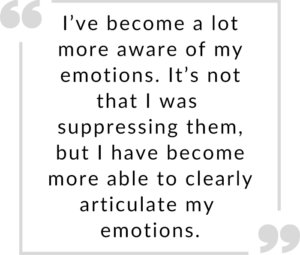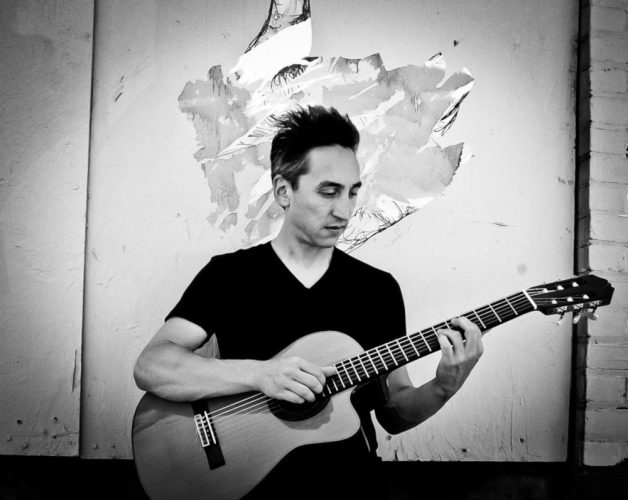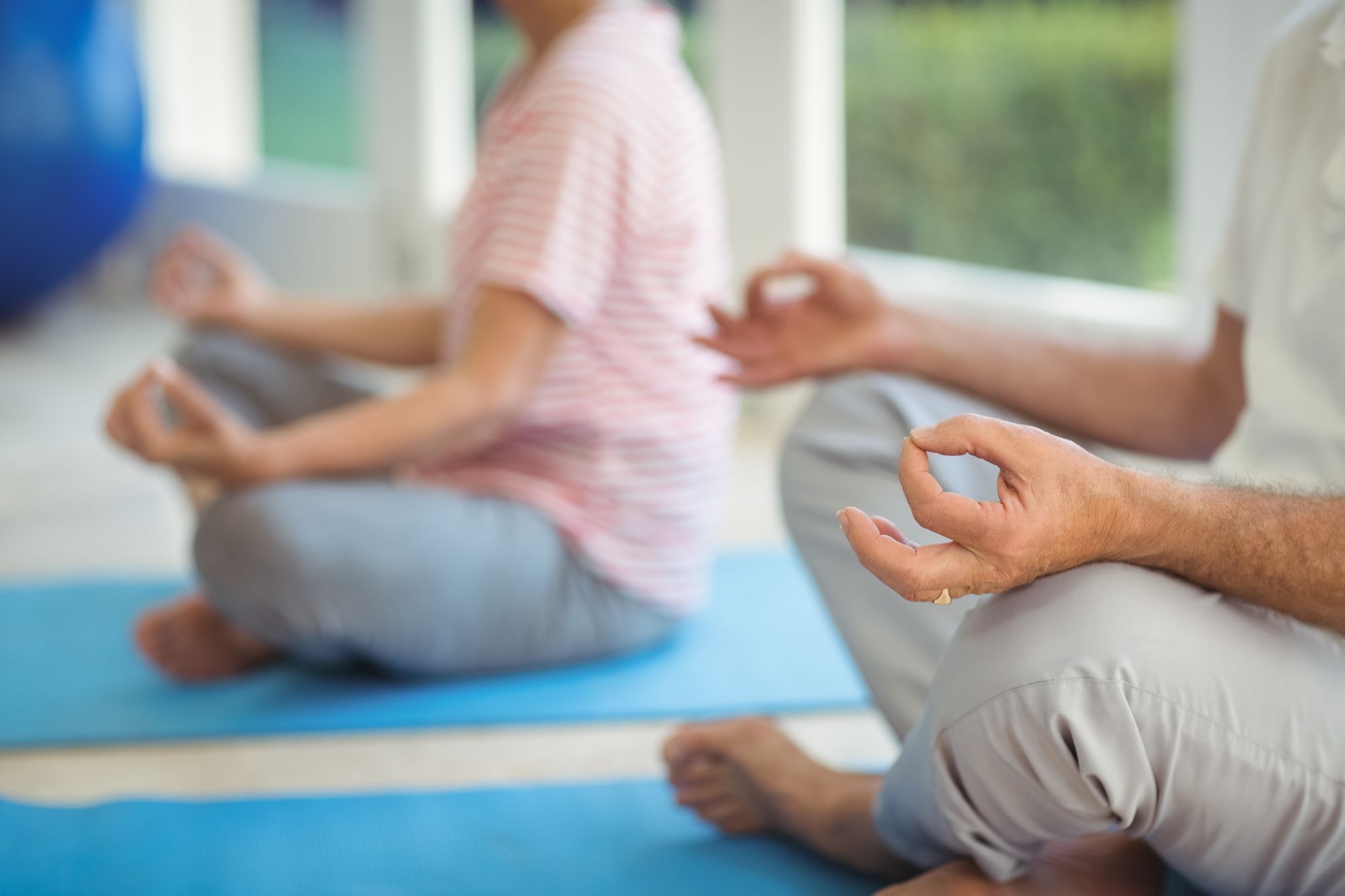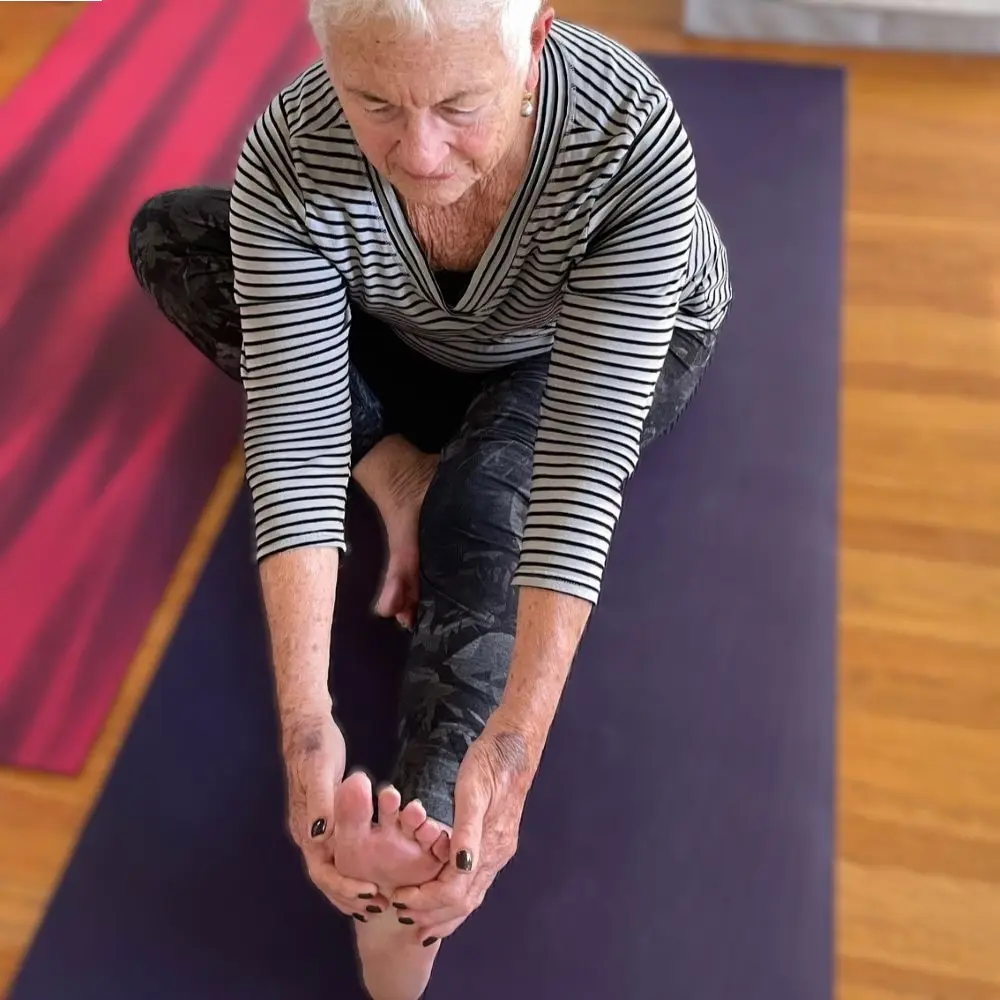This month, I’m talking to our very own Rick Silvestri. I met Rick a few years ago, when he started taking my classes at BTY. After we connected on social media, I learned more about his life off the mat as a musician and father. I sat down to interview Rick at the Mandala Tea House one Sunday, after Led Primary, and before he had a music gig in Gilroy. With a post-practice glow and an Americano in one hand, Rick spoke candidly.
EARL SOLIS: I know you, but I don’t know everything about you. Can you give me your version of your story leading up to now?
RICK SILVESTRI: I was born in Boston, Massachusetts. I moved here when I was a little kid, so I’ve been in California awhile. The weather is incredible here. It’s conducive to a healthy lifestyle. Plus, it’s familiar. I am a creature of habit; that tends to be how I am.
My grandfather would say, “Rick’s a musician through and through.” He was an accountant – straight-laced, by the book. He would wear a suit to go to the supermarket. He saw what I was doing with my life. I have always been free-spirited, easygoing. I didn’t see myself as wanting to be defined by anything, but music defines me. I have been doing music for so long, I can almost sleepwalk through it. But there has to be some degree of spark, and there always is. You just have to find it.
ES: How did you find yoga?
RS: I am the oldest of 3 boys. I’m the musician. My youngest brother is a doctor, and he paid [for] medical school by teaching Bikram yoga. He would talk to me about it. For years, I thought that yoga might be something I wanted to try because of the idea of movement linking with breath. I was an asthmatic kid. I remember lying in bed being very aware of my breath. The coordination of breath with movement in yoga, it gives me a high. It just makes me feel good.
Also, it touches on a spiritual side – I don’t think you can deny that in this practice. As a Catholic-Christian with Buddhist roots, spirituality was just a part of my life. The cool thing about Buddhism is that you practice a lifestyle; it grafts itself to whatever else it is you are practicing. It actually worked out well for me as a Christian. The yoga practice brought it all home and ties right in. A pivotal moment was when I read Autobiography of a Yogi. [Paramahansa Yogananda] just put it all together for me.
ES: So, now, you practice Ashtanga yoga.
RS: I do. I dabble in other styles, but I like familiarity and predictability. It’s very regimented and structured. It’s like a ritual.
ES: How has your practice on the mat affected things off the mat?

RS: It’s like in the Yoga Sutras, you pierce the veil of illusion. In this case, my illusion is whatever head-trip I have about how I think I am versus who I really am and what I’m really feeling. The practice brings forth a heightened sensitivity; the physical sensitivity ties into emotional sensitivity.
ES: In Ashtanga, there are six series. The seventh series is your family life as a householder. Can you go into how yoga affects your role as a householder?
RS: I have two kids. My youngest daughter is going to be eight years old soon, and she can sometimes be all over the place. I tell her to just breathe through her nose. They’ve actually done family yoga at a local gym, and they like it. Of course, they’re kids, so they’re extremely flexible. They can do all kinds of things, and they’re naturally curious.
As a householder, yoga has helped me regulate my emotions so I can ‘deal’ with my kids. There’s nothing we don’t talk about. There’s a lot of dialogue.
It also helps me with my job. Yoga has taught me that I don’t necessarily just want to buy this car, live in this neighborhood, have this type of husband or wife. One of my favorite quotes from Frank Zappa is, “Without deviation from the norm, progress is not possible.”
I want progress; I want innovation. Yoga helps me realize my own individuality. It helps me define what I am seeking in life. Again, that’s part of the emotional sensitivity.
ES: How has your yoga practice changed over time?
RS: I was stiff in the beginning, and there were things I just wasn’t aware of. I was learning about my own body. And, like many, I wasn’t aware of my limitations, and so there were injuries. I injured my knee – torn meniscus – but I am now working with it as it heals. Little things happen now: a back thing here, a shoulder thing there. I am less hypersensitive to injury, but I am also more aware when something is starting to happen in my body. I try to catch it early.
ES: Yoga isn’t always on the mat, is it?
RS: As a motorcycle rider, I practice breathing – pranayama – while riding. Like yoga, it is a practice of control, balance, mindfulness; it’s very graceful. Sometimes it requires patience. Without that, it can become very dangerous, too dangerous. I practice gratitude towards those around me. I ride past cars and I say, “Thank you.” If the other driver is not being nice, you have to think there’s something going on with them that’s causing this.
ES: Do you have any goals for your yoga practice?
RS: I want to maintain a consistent practice. I want to stay healthy and thriving. If that means I’m through the intermediate series, awesome. If that means I’m going back and fixing some things, which is probably likely, great!
I’ve been told I should teach yoga. I think it’s because I’m a bit of an extrovert. This sounds incredibly selfish, but at this point, I’m still just gathering and taking. I don’t feel I’m in a position to share it yet. There is potential, but right now I’m just soaking it all in.
I don’t really know where I’m going to be. Like a lot of things in my life, I wandered into yoga. I am just like what my grandfather said. He had me nailed. He was grounded; he knew exactly what he wanted to do. In his life, the world was going through turmoil and he had to navigate through that. I really admire him.
ES: In some sense, I feel you have a little bit of that in you because of your Ashtanga practice. You may have found it through a haphazard way, but what’s keeping you there is the ritual, the regiment. You are grounded in it. So, really, your grandfather is more in you than you think.
RS: That’s really cool. I never thought of it that way.














